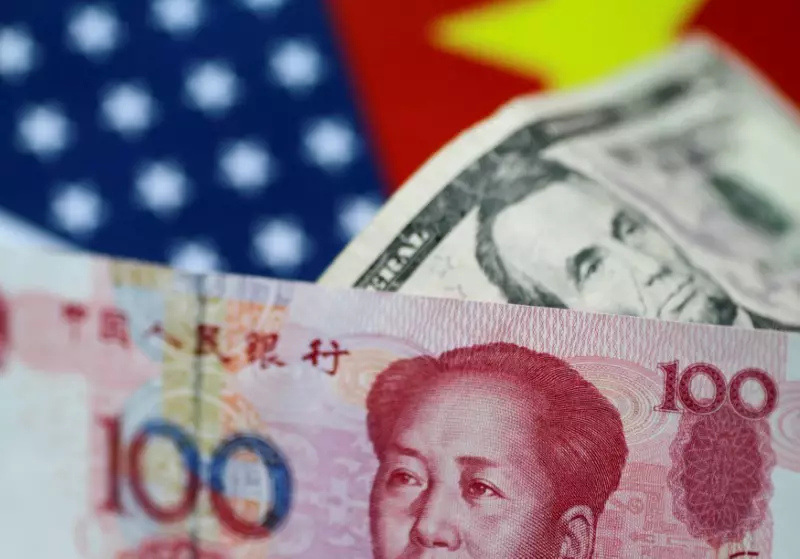The financial landscape in Asia has faced considerable headwinds as the Chinese yuan recently fell to a four-month low against a rising U.S. dollar. This decline can be attributed predominantly to escalating trade tensions stemming from the latest remarks made by U.S. President-elect Donald Trump. As Trump contemplates imposing extensive tariffs on BRICS nations—namely Brazil, Russia, India, China, and South Africa—the market is gripped by uncertainty, leading to a sharp depreciation of various Asian currencies.
In a striking social media post, Trump announced his intention to impose 100% tariffs on BRICS countries, inciting concerns about the potential economic repercussions for nations challenging the dollar’s stronghold in global trade. The implications of such tariffs are alarming, not just for the targeted nations but for global trade dynamics as a whole. This situation is particularly precarious as it arrives midst already fraught U.S.-China relations, which have been marked by previous tariff battles and economic sanctions.
The threats made by Trump sent shockwaves across Asian markets, igniting fears of a looming trade war with the U.S. once more. As investors reevaluate risks, the trend has heavily weighed on regional currencies, driving their values lower.
In stark contrast to the beleaguered Asian currencies, the U.S. dollar has rallied, with the U.S. Dollar Index experiencing a surge of 0.5%. This uptick underscores the dollar’s status as a global safe-haven asset amid periods of market turbulence. Notably, the dollar’s strength benefits from heightened investor apprehension stemming from geopolitical rifts and trade disputes.
This increased demand for the dollar has translated into noticeable declines for currencies like the South Korean won and the Japanese yen, both of which reflect the investor sentiment for safety during turbulent times. As the USD/JPY pair increased by 0.6%, and the USD/KRW climbed by 0.7%, it is evident that confidence in these regional currencies is wavering.
While the broader Asian market struggles, India presents a paradoxical situation. Despite facing headwinds, the Indian rupee maintained relative stability, with the USD/INR pair hovering at a record high of 84.708 rupees. India’s growth story, despite signs of a slowdown in its third-quarter GDP figures, has allowed it to retain the title of the world’s fastest-growing major economy—a position currently unchallenged by China’s growth rate of 4.6% in the same period.
Still, the overall sentiment for the Indian currency is tempered by inflation concerns, with the Reserve Bank of India expected to maintain its key interest rates, reflecting the challenges posed by persistent inflationary pressures.
Amid this backdrop, the Chinese yuan faced a complex situation. Although the onshore USD/CNY pair marked a 0.3% increase, reflecting investor caution rather than confidence, the yuan has seen a significant decline—down 1.8% against the dollar in November alone. The ongoing trade tensions are suspected to exacerbate the sluggishness of Chinese exports, resulting in increased market vulnerability.
Despite a slight uptick in optimism following a positive manufacturing PMI, concerns regarding rising trade tensions overshadow any promising data. The yuan’s decreased value is a stark reminder of how rapidly changing geopolitical landscapes can influence economic stability.
As markets brace for potential developments from the Federal Reserve, confidence remains shaky. Fed Chair Jerome Powell is slated to speak this Wednesday, with investors eagerly awaiting information on the trajectory of interest rates. The anticipation of U.S. job market data and other economic indicators will be crucial in shaping monetary policy moving forward.
As Asia grapples with the immediacy of trade tensions and their implications, analysts will closely monitor how these factors influence currency stability, particularly for vulnerable economies within the region. The backdrop of trade disputes, alongside monetary policy signals from the U.S., will undoubtedly create a challenging environment for many Asian currencies in the near future.

